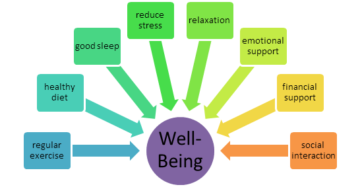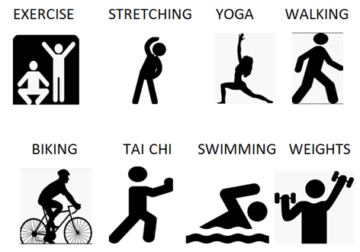Pain Management and Opioids Guide for Consumers
Understand Pain
What Kind of Pain Do You Have?
Talk with Your Doctor about Pain
Self-Care for Pain Management
Understand Opioids
A Pain Medication
Side Effects and Risks
How to Store and Dispose
Distraction is undervalued. We know from research that focusing attention on pain makes the pain worse, and distraction can reduce this pain.
Social contact can help keep moods stable and stops feelings of being alone and depressed. Simply being in the same room as another person has the potential to reduce stress. Try playing cards or see if your place of worship or local community center has social hours. Keep the activities easy and stress free.
Self-Care Approaches to Treating Pain. Mayo Clinic guide offers information to determine the source of pain and numerous methods to self-treat that pain.
Maintain a healthy state of well-being
Maintaining your overall health and well-being may help in reducing the pain response. Living a healthy lifestyle, having positive social interactions and feeling positive about your life can make it easier to handle health problems when they happen.
Breathing Techniques. By allowing more air to enter your body, you will slow down your heart rate, lower your blood pressure, and break the stress cycle. Breathing techniques offered by the University of Minnesota’s Taking Charge of your Health and Well-Being program.
Decrease Stress by Using your Breath. Focusing on your breath is a powerful tool. Learn breathing techniques that ease anxiety, depression and other stress-related issues. Offered by the Healthy LifeStyle by Mayo Clinic.
Rest-ice-compress-elevate (RICE)
| Rest-ice-compress-elevate (RICE) | |
| Rest | • Rest injured area • Limit regular activities |
| Ice | • Ice injury 4-8 times per day. Place a cloth between ice and skin • 10 minutes on and 10 minutes off |
| Compress | • Apply even pressure to reduce swelling • Use a wrap bandage, so it’s snug but not too tight |
| Elevate | • Place injured area on a pillow above the heart • Keep it raised whenever you can. Use pillows for support if needed |
Deep breathing
Take a deep breath, so that your stomach expands like a balloon with each breath. Inhale to a count of four, hold for a count of four, exhale to a count of four, then hold for a count of four. Repeat 10 times every morning and night.
Physical activity
The benefits of exercise are well known, and physical activity may reduce pain.
Phone apps for reducing stress and pain
These wellness apps you can download to your phone. Some health and wellness apps may cost money to purchase. Go to your phone’s App Store to learn more.
Other ideas to help you with pain management
While many prescriptions and over-the-counter medications are available for managing pain, there are other options you may want to try as you heal and recover. This guide talked about some of your options. Talk to your health care provider about options that may work best for you.
| Alternative Therapy | How Does It Work? |
| Physical and Occupational Therapy | A combination of activities, exercises and other techniques used to relieve pain as well as improve range of motion, coordination, flexibility, strength and endurance. |
| TENS or Transcutaneous electrical nerve stimulation | TENS uses low voltage electrical current to relieve pain. Always talk to your doctor or physical therapist before trying TENS. |
| Chiropractic Care or Osteopathic Manipulation | Manipulation of the spine or moving the spine to relieve pain and helps the body to heal. |
| Acupressure | A form of therapy used by applying pressure to specific areas of the body to relieve pain. |
| Acupuncture | Very thin needles are inserted into the skin at specific ‘acupoints’ to relieve pain. |
| Therapeutic Massage | Aids in the healing process by reducing muscle tension, nerve pressure and stress. |
| Cognitive Behavior Therapy | Psychological treatment used to help alleviate pain and depression by identifying a person’s negative thoughts and attitudes and developing coping skill to adjust to the individual’s symptoms. |
| Biofeedback | Biofeedback combines monitoring of your body functions (like your heart rate, blood pressure and breathing) with relaxation exercises to learn how to self-manage pain. |
| Specialty Pain Care | A combination of several treatments and therapies to manage the physical, emotional and psychosocial aspects of pain. |
This list includes examples of some of the most commonly used and effective therapy options that we haven’t mentioned yet.
Call your health insurance company to see which alternative therapies treatment would be covered under your medical benefit. The customer service telephone number is on the back of your health insurance member ID card.
Complementary, Alternative, or Integrative Health: What’s In a Name? Fact sheet looks into these terms to help you understand them better and give you a brief picture of the mission and role of the National Center for Complementary and Integrative Health in this area of research.
Lifestyle Strategies for Pain Management. Pain affects every aspect of your life. It can challenge or change the activities you choose to do, the thoughts you have and even the sleep you get. Your day-to-day life plays a key role in managing pain. See these tips from the Mayo Clinic to help manage your pain.




